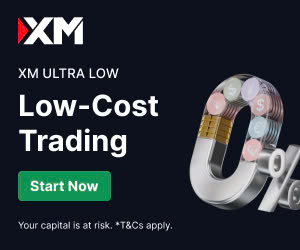
10 minute read
XM vs HFM: A Comprehensive Comparison
In the dynamic world of forex trading, choosing the right broker is critical to success. Two prominent names often come up in discussions: XM vs HFM (formerly HotForex). Both brokers have built strong reputations, offering a range of trading tools, platforms, and competitive conditions. But which one is better suited for your trading needs? In this in-depth comparison, we’ll analyze XM vs HFM across key factors like regulation, trading platforms, fees, account types, education, and customer support to help you make an informed decision.

💥 Trade with XM now: Open An Account or Visit Brokers 🏆
Overview of XM vs HFM
Before diving into the comparison, let’s briefly introduce both brokers.
XM: A Global Forex Powerhouse
Founded in 2009, XM is headquartered in Cyprus and has grown into one of the most recognized forex and CFD brokers globally, serving over 3.5 million traders across 190 countries. Regulated by top-tier authorities like ASIC (Australia), CySEC (Cyprus), and FSC (Belize), XM is known for its user-friendly platforms, extensive educational resources, and competitive spreads.
HFM: A Versatile and Trusted Broker
Established in 2010, HFM (HF Markets) is another heavyweight in the forex industry, with a client base of over 2.5 million traders worldwide. Regulated by multiple authorities, including the FCA (UK), CySEC, and FSCA (South Africa), HFM offers a diverse range of trading instruments and innovative platforms, including its proprietary HFM App.
Both brokers cater to beginners and experienced traders, but their offerings differ in significant ways. Let’s break it down.
1. Regulation and Trustworthiness
Regulation is a cornerstone of a broker’s credibility, ensuring the safety of client funds and fair trading practices.
XM’s Regulatory Framework
XM operates under multiple regulatory bodies, providing robust oversight:
· ASIC (Australia): Known for stringent standards and client protection.
· CySEC (Cyprus): Offers MiFID passporting for EU operations.
· FSC (Belize): Regulates offshore entities with flexible conditions.
· DFSA (Dubai): Enhances credibility in the Middle East.
XM’s Trust Score of 88/99 from ForexBrokers.com reflects its commitment to transparency and security. It provides negative balance protection and segregates client funds from corporate accounts, ensuring safety for retail traders.
HFM’s Regulatory Credentials
HFM boasts an equally impressive regulatory portfolio:
· FCA (UK): One of the most respected regulators globally.
· CySEC (Cyprus): Aligns with EU standards.
· FSCA (South Africa): Strong oversight in African markets.
· DFSA (Dubai), CMA (Kenya), and others: Broadens its global reach.
With a Trust Score of 86/99, HFM is considered highly trusted. Like XM, it offers negative balance protection and segregates client funds. However, HFM’s regulation by more authorities gives it a slight edge for traders prioritizing diverse oversight.
Verdict: Both brokers are highly regulated and trustworthy, but HFM’s broader regulatory coverage may appeal to traders seeking maximum jurisdictional diversity.
2. Trading Platforms
The trading platform is the backbone of your trading experience, impacting usability, speed, and functionality.
XM’s Trading Platforms
XM exclusively supports MetaTrader 4 (MT4) and MetaTrader 5 (MT5), industry-standard platforms known for:
· Advanced charting tools and technical indicators.
· Support for automated trading via Expert Advisors (EAs).
· Compatibility across desktop, web, and mobile devices.
XM enhances the MetaTrader experience with free VPS hosting for high-speed trading and integration with MQL5 for custom indicators. However, XM lacks a proprietary platform, which may limit options for traders seeking a unique interface.
HFM’s Trading Platforms
HFM also offers MT4 and MT5, but it stands out with its proprietary HFM App, available on mobile and desktop. Key features include:
· Seamless trade execution and chart-based trading.
· Integrated account management for deposits and withdrawals.
· Access to third-party tools like Premium Trader Tools from FX Blue Labs.
HFM’s platforms support algo trading, VPS services, and API trading, making it versatile for advanced traders. The HFM App adds a layer of convenience, especially for mobile traders.
Verdict: HFM takes the lead with its proprietary HFM App, offering more platform variety, while XM’s MetaTrader-only approach is reliable but less diverse.
3. Fees and Spreads
Trading costs, including spreads and commissions, directly impact profitability.
XM’s Fee Structure
XM offers three main account types with varying fee structures:
· Micro/Standard Accounts: Spreads start from 1.7 pips (EUR/USD), no commissions.
· XM Ultra Low Account: Spreads as low as 0.6 pips, no commissions.
· XM Zero Account: Spreads from 0.1 pips, $3.50 commission per lot.
XM’s spreads are competitive but slightly above the industry average for standard accounts. It charges no deposit or withdrawal fees (except for bank withdrawals below $200, which incur a $15 fee). An inactivity fee applies after 90 days of no trading.
HFM’s Fee Structure
HFM provides a wider range of account types, each with distinct pricing:
· Micro/Premium Accounts: Spreads from 1.2 pips, no commissions.
· Zero Spread Account: Spreads from 0.0 pips, $6 commission per round lot.
· HFCopy/Auto Accounts: Variable spreads, no commissions.
HFM’s spreads are generally tighter, especially on its Zero Spread Account, making it more cost-effective for high-frequency traders. Like XM, HFM charges no deposit/withdrawal fees but imposes an inactivity fee. Swap rates on overnight positions are also lower at HFM.
Verdict: HFM offers lower spreads and more cost-effective options, particularly for scalpers and high-volume traders, while XM’s fees are competitive but less aggressive.
4. Account Types and Minimum Deposits
Account flexibility is crucial for accommodating different trading styles and budgets.
XM’s Account Offerings
XM provides four account types:
· Micro Account: $5 minimum deposit, ideal for beginners.
· Standard Account: $5 minimum deposit, suited for retail traders.
· Ultra Low Account: $5 minimum deposit, lower spreads.
· Shares Account: $10,000 minimum deposit, for stock trading.
XM also offers Islamic swap-free accounts with no rollover fees, catering to Sharia-compliant traders. Its low minimum deposit of $5 across most accounts makes it highly accessible.
HFM’s Account Offerings
HFM offers a broader selection of accounts:
· Micro Account: $5 minimum deposit, beginner-friendly.
· Premium Account: $100 minimum deposit, for standard trading.
· Zero Spread Account: $200 minimum deposit, for low-cost trading.
· HFCopy Account: $500 minimum deposit, for copy trading.
· Auto Account: $200 minimum deposit, for automated trading.
· Premium Pro Account: $500 minimum deposit, for advanced traders.
HFM’s Islamic accounts are also available, and its HFCopy account is a standout for social trading enthusiasts. However, higher minimum deposits for some accounts may deter budget-conscious traders.
Verdict: HFM offers more account variety, especially for copy trading and advanced traders, but XM’s lower minimum deposits make it more accessible for beginners.
5. Trading Instruments
The range of tradable assets determines your ability to diversify your portfolio.
XM’s Trading Instruments
XM offers over 1,400 instruments, including:
· Forex: 57 currency pairs (majors, minors, exotics).
· CFDs: Stocks, indices, commodities, precious metals, energies.
· Cryptocurrencies: Available under certain entities.
· Turbo Stocks and Shares: For stock trading enthusiasts.
XM’s asset range is robust but lacks ETFs, bonds, and options, limiting diversification for some traders.
HFM’s Trading Instruments
HFM provides over 1,000 instruments, covering:
· Forex: 53 currency pairs.
· CFDs: Stocks, indices, commodities, metals, energies, bonds, ETFs.
· Cryptocurrencies: 40 crypto CFDs.
· Physical Stocks: Available in select regions.
HFM’s inclusion of ETFs and bonds gives it an edge for traders seeking broader market exposure.
Verdict: XM offers a slightly larger asset selection, but HFM’s inclusion of ETFs and bonds makes it more versatile for diversified portfolios.

💥 Trade with XM now: Open An Account or Visit Brokers 🏆
6. Educational Resources
Education is vital for traders, especially beginners, to build skills and confidence.
XM’s Educational Offerings
XM excels in education, earning a 5-star rating from ForexBrokers.com. Its resources include:
· XM Live: Real-time sessions with experts.
· Webinars: Regular forex and CFD tutorials.
· Educational Videos: Covering basics to advanced strategies.
· Trading Tools: Economic calendar, forex calculators, and market analysis.
· MQL5 Integration: For custom trading solutions.
XM’s personalized learning approach caters to traders of all levels, making it a top choice for beginners.
HFM’s Educational Offerings
HFM also provides comprehensive education, though it lags slightly behind XM:
· Webinars and Seminars: Covering trading strategies and market trends.
· Video Tutorials: Beginner and advanced topics.
· eBooks and Articles: In-depth guides on forex and CFDs.
· Investor Dictionary: Definitions of over 50 trading terms.
HFM’s resources are well-structured but less personalized compared to XM’s tailored approach.
Verdict: XM leads with its extensive and personalized educational content, while HFM offers solid resources but lacks the same depth.
7. Customer Support
Reliable customer support ensures traders can resolve issues quickly.
XM’s Customer Support
XM provides 24/5 multilingual support via:
· Live chat, email, and phone.
· Additional channels like WhatsApp, Viber, and Telegram.
· Support in over 21 languages.
XM’s support is highly responsive, with a reputation for quick resolution and accessibility, even on weekends via email.
HFM’s Customer Support
HFM offers 24/5 support through:
· Live chat, email, and phone.
· Support in 27 languages, slightly more than XM.
However, HFM’s live chat has been criticized for slow responses and occasional errors, making phone or email support more reliable for urgent queries.
Verdict: XM edges out HFM with faster and more reliable support across multiple channels.
8. Additional Features
Both brokers offer unique features to enhance the trading experience.
XM’s Unique Features
· Copy Trading: Strong copy trading platform for beginners.
· Bonuses and Promotions: Regular deposit bonuses and loyalty programs.
· Free VPS: For high-speed trading.
· Awards: Won multiple awards, including Best FX Customer Service in 2023.
HFM’s Unique Features
· HFCopy: A proprietary copy trading platform, ideal for social trading.
· High Leverage: Up to 1:2000, higher than XM’s 1:1000.
· Premium Trader Tools: Advanced tools for technical analysis.
· Awards: Over 60 industry awards for performance and innovation.
Verdict: HFM’s HFCopy and higher leverage appeal to social and high-risk traders, while XM’s bonuses and VPS cater to a broader audience.
Pros and Cons
XM Pros
· Low minimum deposit ($5).
· Extensive educational resources.
· Competitive spreads on Ultra Low and Zero accounts.
· Strong copy trading features.
· Highly responsive customer support.
XM Cons
· Limited platform options (only MT4/MT5).
· Average spreads on standard accounts.
· No ETFs or bonds.
HFM Pros
· Wide range of account types.
· Proprietary HFM App for mobile trading.
· Lower spreads, especially on Zero Spread Account.
· Diverse trading instruments, including ETFs and bonds.
· High leverage up to 1:2000.
HFM Cons
· Higher minimum deposits for some accounts.
· Less personalized education.
· Inconsistent live chat support.
Which Broker Should You Choose?
Choosing between XM vs HFM depends on your trading goals and preferences:
· Choose XM if:
· You’re a beginner seeking extensive educational resources.
· You prefer low minimum deposits and a user-friendly experience.
· You value responsive customer support and copy trading features.
· You prioritize competitive spreads with no commissions.
· Choose HFM if:
· You want a wider range of account types and trading instruments.
· You’re interested in social trading via HFCopy.
· You prefer lower spreads and higher leverage for aggressive trading.
· You value a proprietary mobile app for on-the-go trading.
Conclusion
Both XM vs HFM are exceptional forex brokers with strong regulatory backing, robust platforms, and competitive offerings. XM shines for beginners with its low entry barriers, personalized education, and reliable support. HFM stands out for experienced traders with its diverse account types, lower spreads, and innovative features like the HFM App and HFCopy.
Ultimately, the best broker depends on your trading style, budget, and priorities. We recommend testing both brokers with their unlimited demo accounts to experience their platforms and conditions firsthand. Whichever you choose, XM vs HFM are both reliable partners for navigating the forex markets.
💥 Note: To enjoy the benefits of the partner code, such as trading fee rebates, you need to register with XM through this link: Open An Account or Visit Brokers 🏆
Read more:




